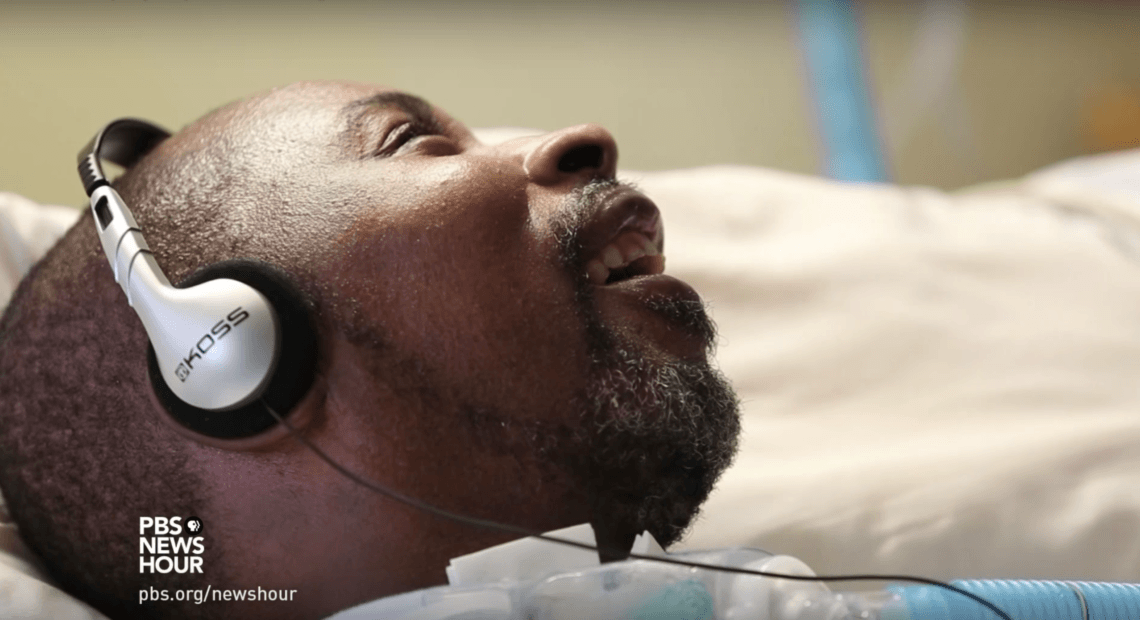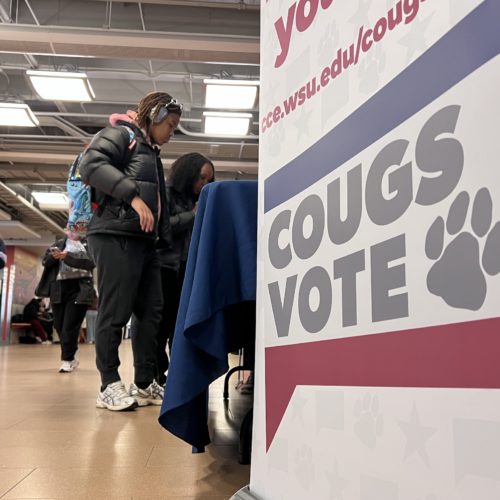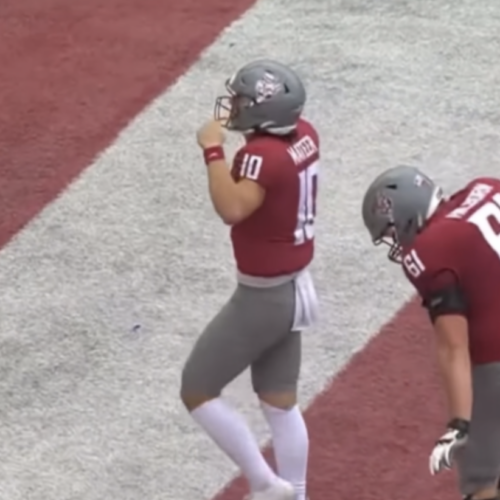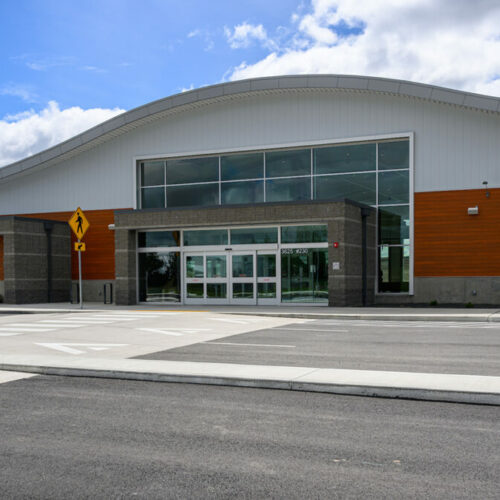Judy Woodruff:
Science has shown that music has a way of invoking memory. It has been used to help people suffering from dementia to become more aware of their surroundings.
Tonight, a story about a California nursing home using music therapy on residents who were once considered unreachable.
In collaboration with inewsource in San Diego, Joanne Faryon explains how music is offering a new way to connect.
Joanne Faryon:
At 44 years old, Steven Nelson has lived at the Villa Coronado Skilled Nursing Facility for almost seven years.
He was shot five times and beaten in a nightclub in San Diego. He is unable to move his body, except for his left hand. He doesn’t speak. He’s kept alive with breathing and feeding tubes.
Just how conscious Steven is, how aware he is of his surroundings or even himself is unclear. Something happens when Steven listens to music. It makes him smile, and calms him, because there have been times when Steven becomes so agitated, he’s fallen out of bed. He is one of 10 Villa Coronado residents with traumatic brain injury given an iPod as part of a statewide experiment.
Researchers want to know whether music can replace antipsychotic drugs and restraints for nursing home residents prone to agitation. And, so far, with Steven, it seems to be working.
Chris Walker runs Villa Coronado.
Chris Walker:
We didn’t really know what was going to happen until we stating putting them on.
Joanne Faryon:
He jumped at the chance to try something new on a patient population that receives little or no therapy, people who for the most part live the remainder of their lives in beds, unable to interact with the world around them.
Chris Walker:
Sometimes, it could be a smile. It could be the way they look at their loved ones when they hear the music.
Joanne Faryon:
More than 4,500 men and women living in 300 California nursing homes are taking part in the study, which was designed for people with dementia.
Debra Bakerjian:
We’re going to try to show an association between the use of the music program and whether or not it reduces their aggressive behavior, whether they can come off of their antipsychotic medication.
Woman:
Once we put the iPod on her, she started shaking her.
Joanne Faryon:
The idea of using music in nursing homes took off after this documentary debuted a few years ago.
Man:
Music has more ability to activate more parts of the brain than any other stimulus.
Joanne Faryon:
And launched an international music and memory program in thousands of nursing homes.
New research suggests music therapy could help with recovery in people with coma or in a vegetative state. It may even help diagnose consciousness, which continues to mystify scientists.
Studies have consistently shown high rates of misdiagnosis in vegetative patients, indicating there is more likely a spectrum of consciousness.
That is, they drift in and out. Caroline Schnakers is an associate clinical professor in the Department of Psychiatry at UCLA. Her work has demonstrated a 40 to 50 percent error rate in determining consciousness.
Caroline Schnakers:
So, half the time, you might think that your patient is unconscious, though he is conscious or is showing signs of consciousness. Yes, this is mind-boggling. It’s very challenging.
Joanne Faryon:
The impact of misdiagnosis can affect medical treatment, end-of-life decisions, and it’s especially important when it comes to predicting a patient’s chances of recovery.
Caroline Schnakers:
We know that the patient that in MCS, for example, minimally conscious state, I mean, have more chance, more likelihood to emerge or to get better than a patient that are in vegetative states.
Joanne Faryon:
In other words, if a patient is sometimes conscious, like Steven, as opposed to never, there is hope.
Steven’s mother, Gloria Hawkins.
So, what’s his official diagnosis? He’s in a vegetative state?
Gloria Hawkins:
Yes. That’s it.
Joanne Faryon:
Steven’s current physician is Dr. Ken Warm. He practices family medicine and admits the nursing home doesn’t have the resources to evaluate patients for consciousness.
So, then his diagnosis of persistent vegetative state, is it actually relevant? Is it true still?
Dr. Ken Warm:
It would be a lot of splitting of hairs, because he’s responding in a very limited fashion.
Joanne Faryon:
After the interview, I asked Dr. Warm to check the latest notes and diagnosis on Steven’s chart.
Dr. Ken Warm:
And I went and reviewed the criteria for persistent vegetative state, and it’s very clear that he doesn’t fit that.
Joanne Faryon:
He said Steven had made enough progress over the years that now he is more likely in a minimally conscious state. But it’s difficult to know for certain.
Dr. Ken Warm:
There’s so much unknown about their cognitive function.
Joanne Faryon:
Researchers at U.C.-Davis plan to have initial results of their nursing home study by the end of the year. But regardless of whether music is able to replace medication, Debra Bakerjian says she’s certain it can improve quality of life.
Debra Bakerjian:
I was almost in tears doing this interview with an activities director in a nursing home who was sharing how excited they were at their nursing home about the response of the residents, and what he told me was, they just come alive.
Joanne Faryon:
This was Steven before the shooting singing to his grandmother on her birthday.
Gloria Hawkins knows her son will never be this Steven again, but she wonders whether, with more therapy, he might be capable of interacting with the world around him, outside of this nursing home bed, in a more meaningful way. She believes Steven can hear and understand her.
Gloria Hawkins:
That’s what keeps me going. I know he’s in there.
Joanne Faryon:
And she’s certain he can hear the music.
For the PBS NewsHour, I’m Joanne Faryon in San Diego.




















